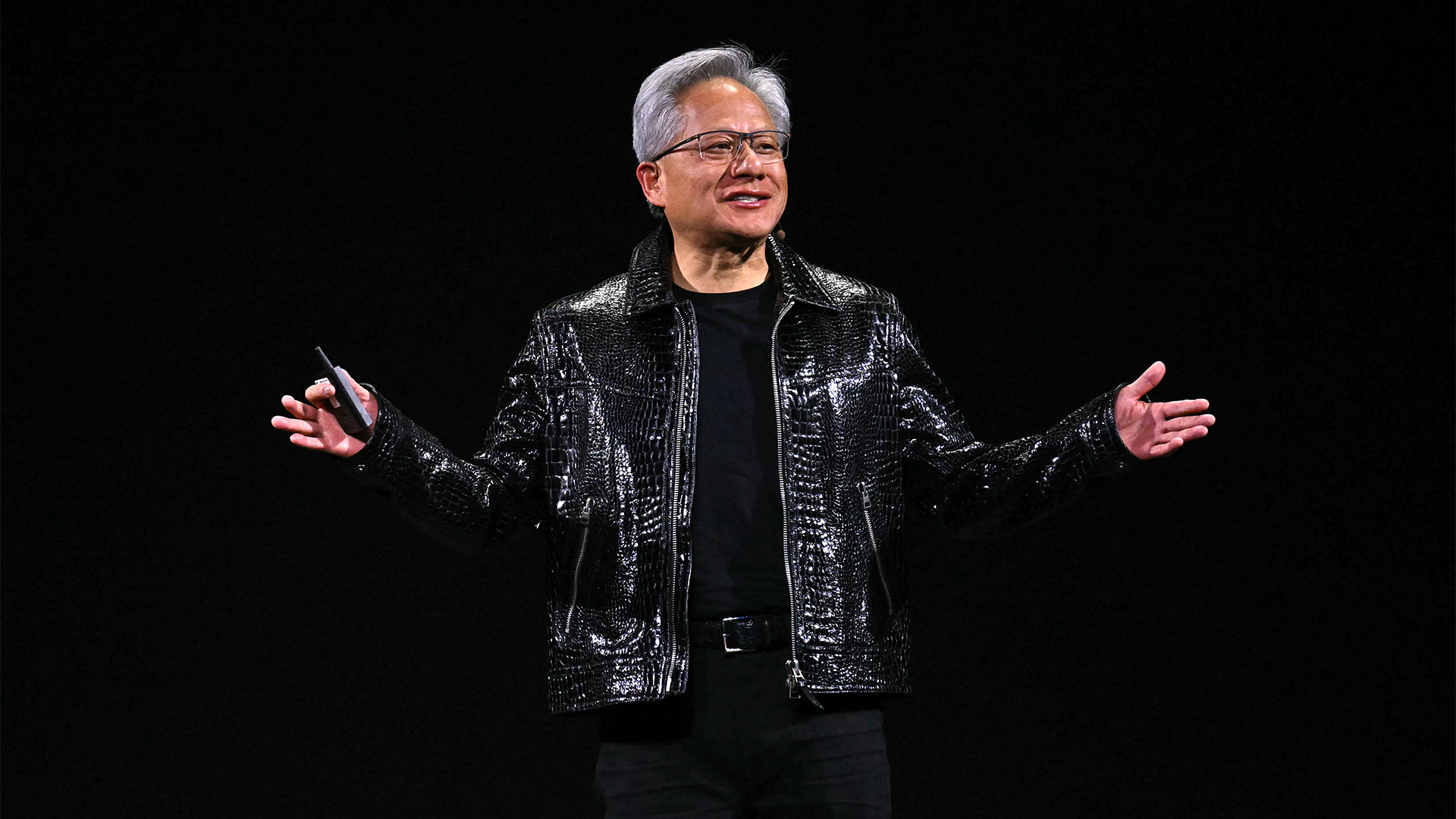UK supercomputer boom as HPE and Dell receive funding for new AI cluster
The UK’s AI computing capabilities will increase by an order of magnitude in 2024


Hewlett Packard Enterprise (HPE) and Dell Technologies have both announced UK supercomputer projects as part of a UK government initiative on artificial intelligence (AI) and exascale computing.
The UK government will invest £225 million in a joint project between HPE and the University of Bristol called Isambard-AI, which will become the most powerful supercomputer in the UK when it’s turned on in 2024.
Isambard-AI will be capable of 200 petaflops of performance under the Top500’s Linpack benchmark – around ten times that of the current fastest UK supercomputer, ARCHER2. It will also be capable of 21 exaflops of AI performance for training frontier generative AI models, such as new and advanced large language models (LLMs).
A further £75 million has been awarded to Dell Technologies, which has collaborated with Intel and the University of Cambridge to produce the Dawn supercomputer, which has been deployed and will be fully running in the next two months. The trio claim that it’s the UK’s fastest AI supercomputer at present.
Isambard-AI and Dawn combine to form a supercomputer cluster as part of the AI Research Resource (AIRR), a facility for AI research and innovation created through a £300 million government investment.
Once the AIRR is fully operational, the UK will host some of the most powerful supercomputers not only in Europe but the world. Through this funding and the UK’s AI Safety Summit, the government has attempted to legitimize the UK’s place as an international research hub.
The Universities of Bristol and Cambridge will each host part of the cluster, with a phase 2 for Dawn expected in 2024 that will increase its performance tenfold.
Sign up today and you will receive a free copy of our Future Focus 2025 report - the leading guidance on AI, cybersecurity and other IT challenges as per 700+ senior executives
"Today's announcement of the UK’s major investment in AI supercomputing underscores its commitment to taking a global leadership position in AI,” said Justin Hotard, executive vice president and general manager, HPC, AI and Labs at HPE.
“The Isambard-AI system will harness world-leading supercomputing, including high-performance networking co-developed at HPE's Bristol labs, to provide the performance and scale required for compute-intensive AI projects. We are proud to partner with the UK Government and the University of Bristol to give UK researchers and industry access to Europe's largest AI system for open science."
RELATED RESOURCE

More than a number: Your risk score explained
Learn about the benefits of continuous cyber risk scoring
DOWNLOAD NOW
Unlike HPE with Isambard-AI, Dell has not yet released expected performance numbers for Dawn, but will do so at the Supercomputing 23 conference, held from 12-17 November 2023 in Denver, Colorado.
The supercomputer has been formed from PowerEdge XE9640 servers, which contain Intel’s Xeon Scalable processors and Intel Data Center GPU Max accelerators. In Dawn, Intel has a chance to prove the power of its GPUs in comparison to Nvidia’s sought-after AI chips, in its goal to achieve AI hardware dominance by 2025.
“Collaborations like the one between the University of Cambridge, Dell Technologies and Intel, alongside strong inward investment, are vital if we want compute to unlock the high-growth AI potential of the U.K,” said Tariq Hussain, head of UK public sector at Dell Technologies.
“It is paramount that the government invests in the right technologies and infrastructure to ensure the UK leads in AI and exascale-class simulation capability. It’s also important to embrace the full spectrum of the technology ecosystem, including GPU diversity, to ensure customers can tackle the growing demands of generative AI, industrial simulation modeling and ground-breaking scientific research.”
Isambard-AI is being built using HPE’s Cray EX supercomputer, hosting 5,448 of Nvidia’s GH200 Grace Hopper Superchips connected using HPE Slingshot 11 interconnect technology. It will also be capable of almost 25 petabytes of storage using the Cray Clusterstor E1000.
HPE says that Isambard-AI will be optimized for AI data and will be housed in a self-cooled data center at the National Composites Center at Bristol and Bath Science Park. Excess heat will eventually be used to heat nearby buildings.
Once fully operational, the AIRR cluster will push the UK closer to its exascale goal and drive research in fields including climate modeling, AI, future energy systems such as fusion, and frontier science.

Rory Bathgate is Features and Multimedia Editor at ITPro, overseeing all in-depth content and case studies. He can also be found co-hosting the ITPro Podcast with Jane McCallion, swapping a keyboard for a microphone to discuss the latest learnings with thought leaders from across the tech sector.
In his free time, Rory enjoys photography, video editing, and good science fiction. After graduating from the University of Kent with a BA in English and American Literature, Rory undertook an MA in Eighteenth-Century Studies at King’s College London. He joined ITPro in 2022 as a graduate, following four years in student journalism. You can contact Rory at rory.bathgate@futurenet.com or on LinkedIn.
-
 HPE and Nvidia launch first EU AI factory lab in France
HPE and Nvidia launch first EU AI factory lab in FranceNews The facility will let customers test and validate their sovereign AI factories
-
 Dell Technologies doubles down on AI with SC25 announcements
Dell Technologies doubles down on AI with SC25 announcementsAI Factories, networking, storage and more get an update, while the company deepens its relationship with Nvidia
-
 Nvidia CEO Jensen Huang says future enterprises will employ a ‘combination of humans and digital humans’ – but do people really want to work alongside agents? The answer is complicated.
Nvidia CEO Jensen Huang says future enterprises will employ a ‘combination of humans and digital humans’ – but do people really want to work alongside agents? The answer is complicated.News Enterprise workforces of the future will be made up of a "combination of humans and digital humans," according to Nvidia CEO Jensen Huang. But how will humans feel about it?
-
 OpenAI signs another chip deal, this time with AMD
OpenAI signs another chip deal, this time with AMDnews AMD deal is worth billions, and follows a similar partnership with Nvidia last month
-
 Why Nvidia’s $100 billion deal with OpenAI is a win-win for both companies
Why Nvidia’s $100 billion deal with OpenAI is a win-win for both companiesNews OpenAI will use Nvidia chips to build massive systems to train AI
-
 Jensen Huang says 'the AI race is on' as Nvidia shrugs off market bubble concerns
Jensen Huang says 'the AI race is on' as Nvidia shrugs off market bubble concernsNews The Nvidia chief exec appears upbeat on the future of the AI market despite recent concerns
-
 HPE's AI factory line just got a huge update
HPE's AI factory line just got a huge updatenews New 'composable' services with Nvidia hardware will allow businesses to scale AI infrastructure
-
 Nvidia, Deutsche Telekom team up for "sovereign" industrial AI cloud
Nvidia, Deutsche Telekom team up for "sovereign" industrial AI cloudNews German telecoms giant will host industrial data center for AI applications using Nvidia technology

